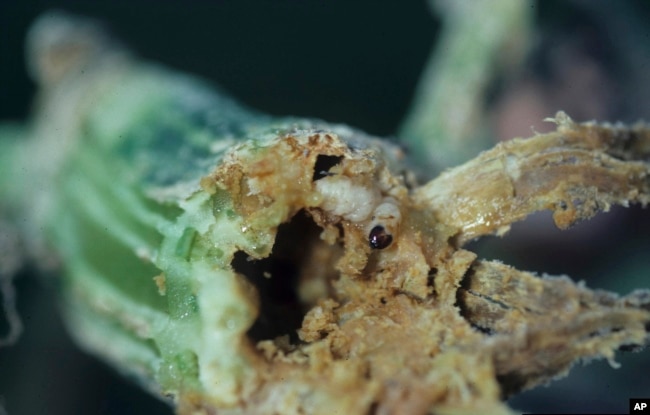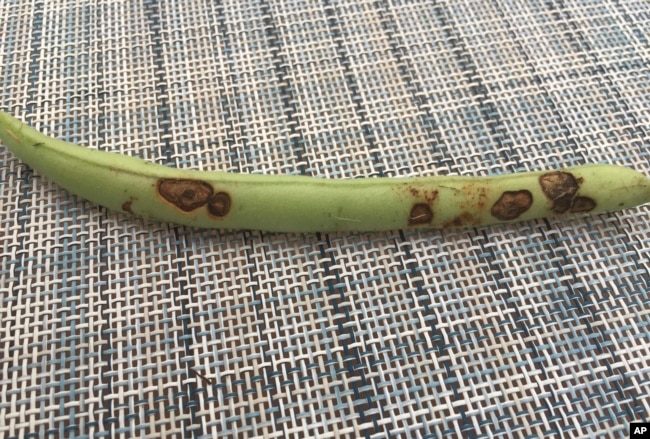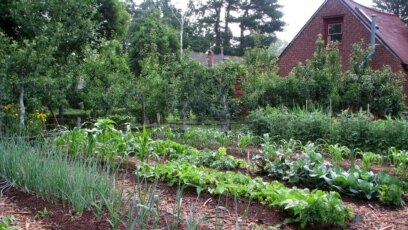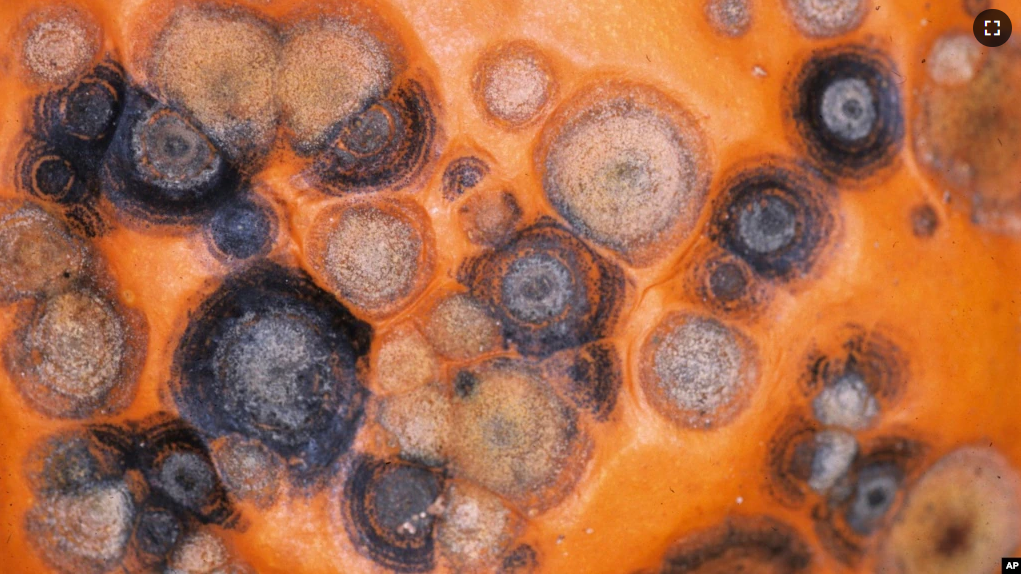Did you start seeds in spring and watch them grow under your care? Did you water, fertilize and stake your little vegetable plants while thinking about the tasty food they would become?
Then one day, did you find unusual marks on your plants or some other signs of poor health? Maybe its leaves turn strange colors or its base is too soft and wet.
You are not alone, says gardening expert Jessica Damiano. She recently wrote about the issue for The Associated Press.
Damiano says many home gardeners lovingly raise their plants in the early weeks but still find them ruined before harvest time.
Here are Damiano’s suggestions for identifying and treating five of the most common conditions that threaten your crops.
Anthracnose
The first condition, anthracnose, is a fungal disease. It affects beans, cucumbers, eggplants, melons and peas. Other targets are peppers, tomatoes, pumpkins and spinach.
Anthracnose presents as small, round marks, or spots, on leaves. These yellow spots darken over time and spread to cover entire leaves. On cucumber plants, leaves may drop, and whole vines may die. Tomatoes and peppers show dark, sunken spots that become more apparent as the fruit ages. Round, sunken, yellow spots appear on melons, darkening over time to brown and then black.
To prevent anthracnose, try rotating crops, adding compost to soil before planting and spreading mulch afterward. Seek disease-resistant kinds of the plants. Avoid watering the plant from above as it wets the leaves. Wet leaves are more at risk of fungal growth.
Treat infected plants with a fungus poison. These contain chlorothalonil or copper. Carefully follow the directions and safety guidance provided with the product.

Blossom end rot
Blossom end rot is another common problem for gardeners.
A lack of calcium causes the condition. Blossom end rot mainly affects tomatoes, eggplant and peppers. The condition presents as dark, soft spots on fruit bottoms. The disorder is often the result of uneven watering, acid imbalance in the soil, injured roots or high levels of nitrogen.
Prevention measures include testing for an acid imbalance. If results are lower than 6.3, add dolomitic lime to planting area.
Treat affected plants by spraying leaves fully with a calcium product. Fruit produced after treatment is usually symptom-free, although sometimes a second treatment is necessary.
Wilt diseases are another common danger for plants.
Verticillium and fusarium wilt are fungal diseases that spread in soil. They mainly affect eggplants, peppers, potatoes, pumpkins and tomatoes.
The diseases destroys the roots of the plants, resulting in curled, yellow and wilted leaves, brown, damaged tissue inside stems and incomplete growth. Entire plants wilt and die.
The only defense against these funguses is a good offense. Avoid infection by planting resistant kinds of the plant. Sellers will mark the plants with a V, F, VF or VFN to identify them as resistant to verticillium wilt and fusarium wilt. You should also rotate crops, keeping infected areas free of susceptible plants for three or four years. This starves the disease and clears it from the soil. Clean up fallen leaves as well as fruit and plant waste.

Squash vine borer
A fourth common trouble for gardeners comes from the animal world — the little killer is an insect.
Called the squash vine borer, the pest can cause sudden death after the bloom of zucchini, squash, cucumber and muskmelon plants. Look closely at these plants for signs of the insect: small holes in the bottoms of stalks and stems.
The pests start life as moths that lay eggs at the base of plants. Inch-long white caterpillars result, killing plants as they eat their way around and out. And just when you think the damage is done, they remain in the soil through the following year as they develop into moths. Then the process repeats.
Prevent damage by checking plants closely. Look for red, flat, eggs early in the season and remove them by hand. Keep hunting every week.
Search for holes and borer waste — thick collections of yellow dust material. If found, make a long, shallow, narrow cut near a bore hole on the stem. Use your hand to pull out the borers. Then cover the cuts with soil to support new growth.
If necessary, treat plants with Bacillus thuringiensis, or Bt, a bacterial insect-killing product.
Slugs
The final common threat to the garden is another animal — the slug.
Slug damage presents as jagged holes, usually in the center of a leaf as opposed to its edges. Slugs eat basil, cabbage, cucumbers, lettuce, tomatoes, peppers, and ornamental plants like hostas. The animals also leave a recognizable path of slime wherever they go.
A spring cleanup that clears leaves, plant debris and slug eggs from the soil surface is an important first step in the slug fight. Keep mulch no deeper than 7 centimeters to avoid creating a refuge for the pests.
Put a small can or jar into the soil around affected plants, leaving about 2.5 centimeters above ground. Then, fill it halfway with the alcohol called beer. Slugs will enter the container for a drink and then they will drown. You can also attack slugs at night when they feed. The weapon in this case is salt. Shake a little on each slug and it will die from lack of water. But make sure to keep salt limited to the animals only, as salt can damage the soil.
I’m Bryan Lynn.
And I’m Caty Weaver.
Jessica Damiano wrote this report for The Associated Press. Caty Weaver adapted it for VOA Learning English.
______________________________________________________________________
Quiz- What to Do about 5 Common Threats to Your Vegetable Garden

Start the Quiz to find out
______________________________________________________________________
Words in This Story
fungal –adj. of, or relating to, any member of the kingdom of living things (as mushrooms, molds, and rusts) that have no chlorophyll, must live in or on plants, animals, or decaying material, and were formerly considered plants
rotate –v. in agriculture: to grow different crops in succession on the same land chiefly to keep the productive capacity of the soil
mulch –n. a material (as straw or bark) spread over the ground especially to protect the roots of plants from heat or cold, to keep soil moist, and to control weeds
stake –v. to fasten up or support (something, such as a plant) with stakes
wilt –v. to lose freshness and become limp, especially due to lack of nutrients
stem –n. the main trunk of a plant
susceptible –adj. having little resistance (as to infection or damage)
pest –n. a plant or animal that is harmful to humans or property
bloom –v. state or period of flowering
stalk –n. a plant stem especially when not woody
jagged –adj. having a sharply uneven edge or surface
ornamental –adj. a decorative object, especially : a plant cultivated for its beauty rather than for use
